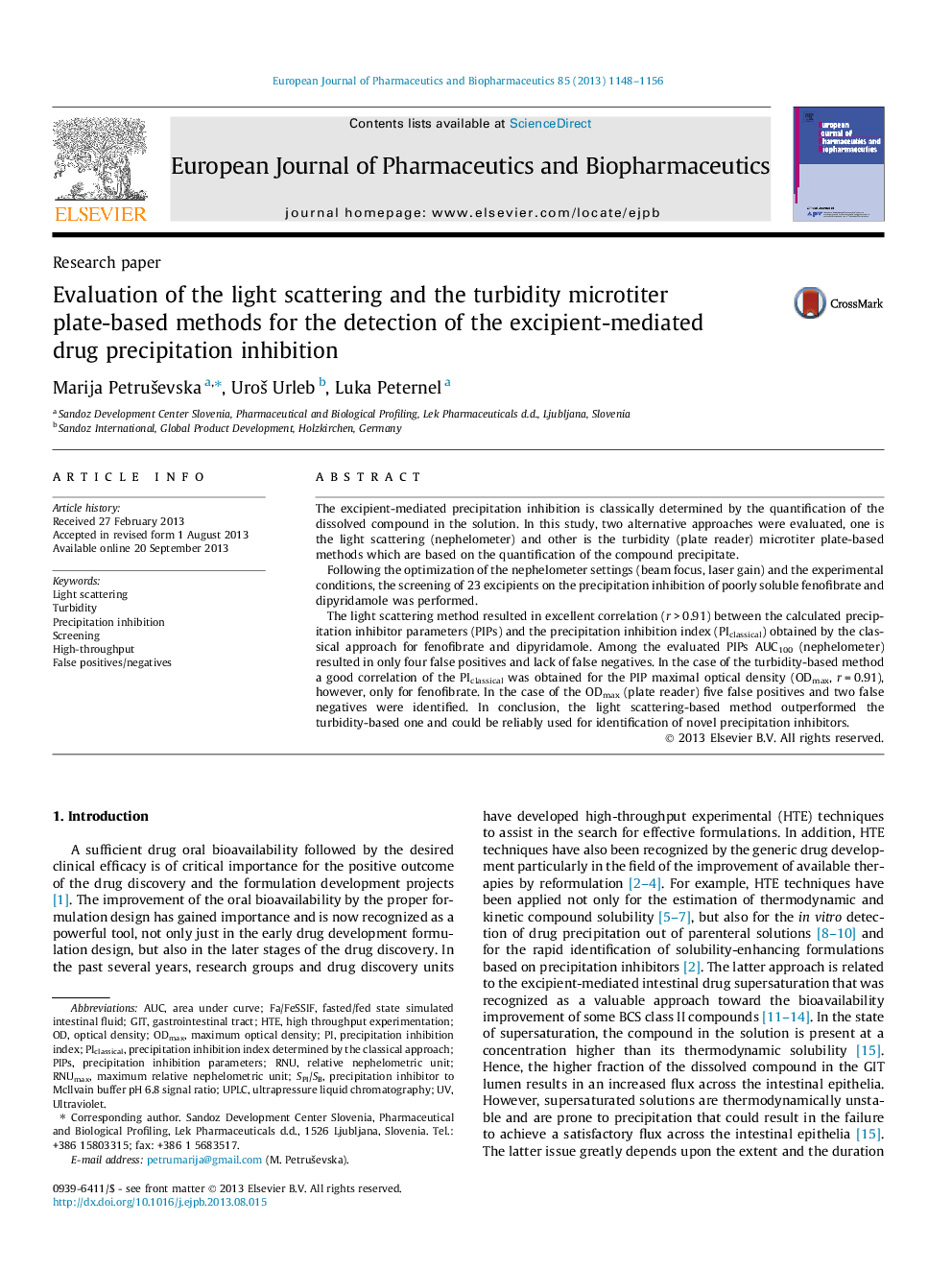| Article ID | Journal | Published Year | Pages | File Type |
|---|---|---|---|---|
| 8414389 | European Journal of Pharmaceutics and Biopharmaceutics | 2013 | 9 Pages |
Abstract
The excipient-mediated precipitation inhibition is classically determined by the quantification of the dissolved compound in the solution. In this study, two alternative approaches were evaluated, one is the light scattering (nephelometer) and other is the turbidity (plate reader) microtiter plate-based methods which are based on the quantification of the compound precipitate.Following the optimization of the nephelometer settings (beam focus, laser gain) and the experimental conditions, the screening of 23 excipients on the precipitation inhibition of poorly soluble fenofibrate and dipyridamole was performed.The light scattering method resulted in excellent correlation (r > 0.91) between the calculated precipitation inhibitor parameters (PIPs) and the precipitation inhibition index (PIclassical) obtained by the classical approach for fenofibrate and dipyridamole. Among the evaluated PIPs AUC100 (nephelometer) resulted in only four false positives and lack of false negatives. In the case of the turbidity-based method a good correlation of the PIclassical was obtained for the PIP maximal optical density (ODmax, r = 0.91), however, only for fenofibrate. In the case of the ODmax (plate reader) five false positives and two false negatives were identified. In conclusion, the light scattering-based method outperformed the turbidity-based one and could be reliably used for identification of novel precipitation inhibitors.
Keywords
Related Topics
Life Sciences
Biochemistry, Genetics and Molecular Biology
Biotechnology
Authors
Marija Petruševska, Uroš Urleb, Luka Peternel,
